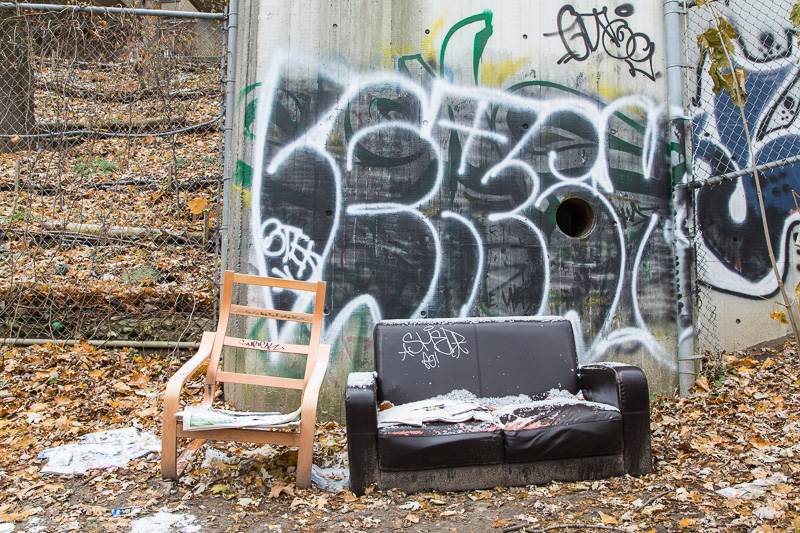I wonder if it’s okay to shoot graffiti. The reason for my concern is that if I shoot graffiti I’ll be appropriating the creative expression of someone else. All the originality and work is theirs. I simply point my camera and click a button. There is always the argument that because graffiti defaces property, it doesn’t lie in the graffiti artist’s mouth to complain that their rights have been violated by a digital appropriation. Then again, some photographers take their appropriation to its logical conclusion, giving rise to the possibility that maybe graffiti artists DO have something to complain about. I’ve seen photographers advertising prints of graffiti for sale on fineartamerica. It’s as if graffiti is a raw resource, like timber or crude oil, and anyone is free to stake a claim and try to make some money from it.
Thankfully, ethics has no necessary connection to property interests (or to the law, for the matter). There’s a pithy quote from Isaac Asimov’s Foundation novel that can be adapted to this situation: Never let your sense of morality prevent you from doing what is right. Substitute “legality” for morality and there you go.
It seems to be a longstanding and intuitive principle of fairness that one should not profit from someone else’s efforts. Those efforts can take different forms. After all, there is graffiti. And then there is graffiti.
There is sanctioned graffiti. Municipalities commission artists to cover walls as a way to keep people from covering the walls.
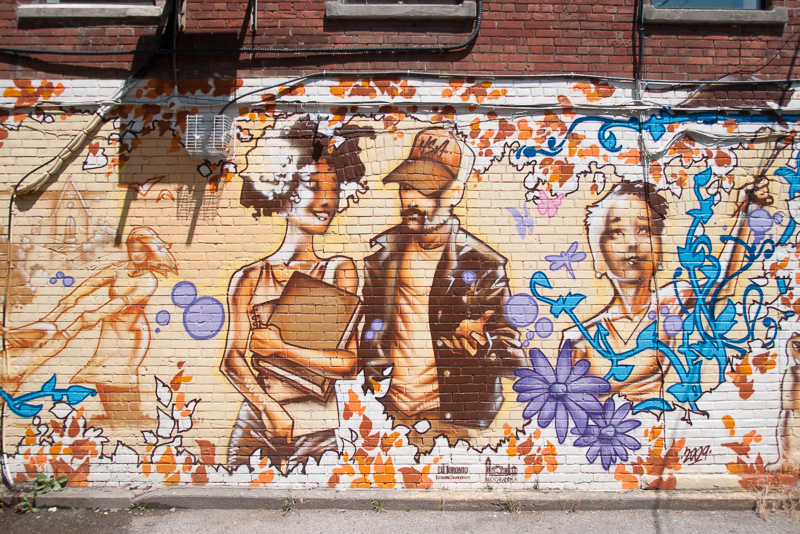
Or they give over public space to private corporations (as Toronto did below to a property developer, Lanterra) to commission artists to cover walls as a way to keep people from covering the walls.
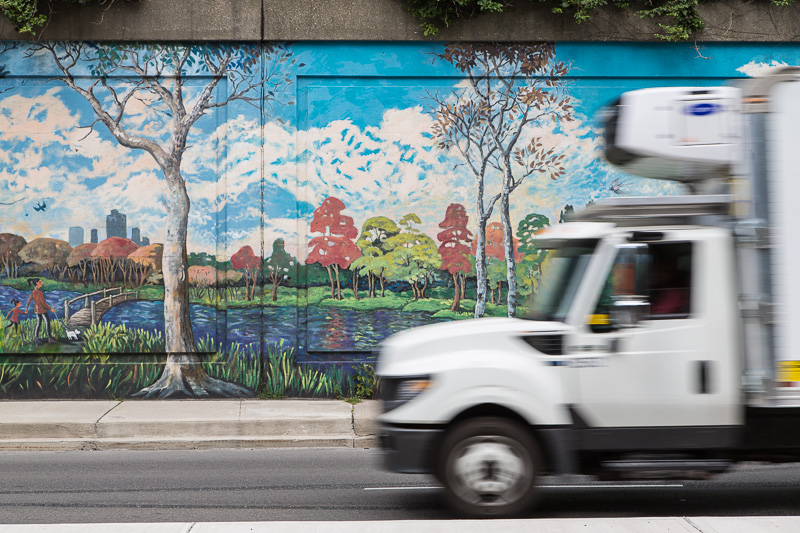
The results tend to by kitschy, banal, sentimental, hokey, uninspired and uninspiring (any or all of these descriptors will do).
Or, you have private property owners who commission artists to cover their vulnerable garage doors as home-owners have done in the Kensington Market area.
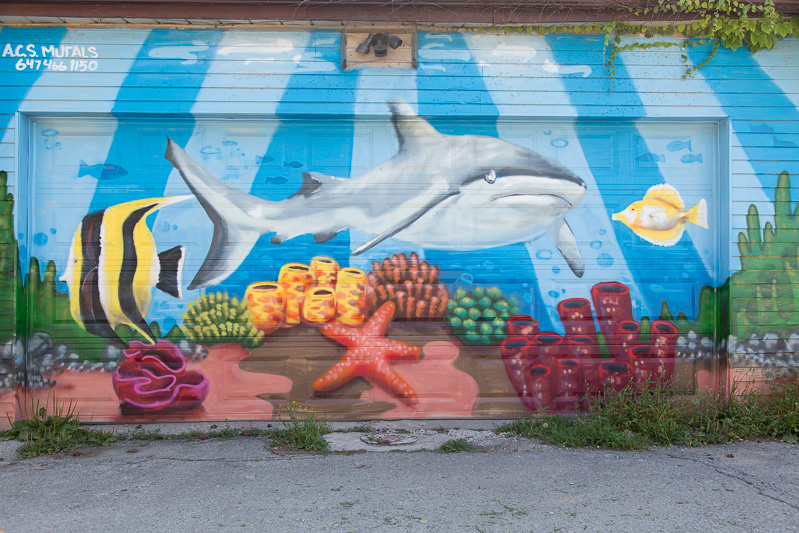
Or, you have graffiti that becomes “special” in the hearts of ordinary citizens (e.g. the alley south of Queen Street which makes regular appearances in Rick Mercer’s rants). The graffiti enters a kind of street-art archive where everything is static. It loses its conversational nature. It ceases to participate in the city’s dynamic life. It withers like a lonely animal in a zoo. (Forgive my hyperbole; maybe some Rick Mercer rubbed off.)
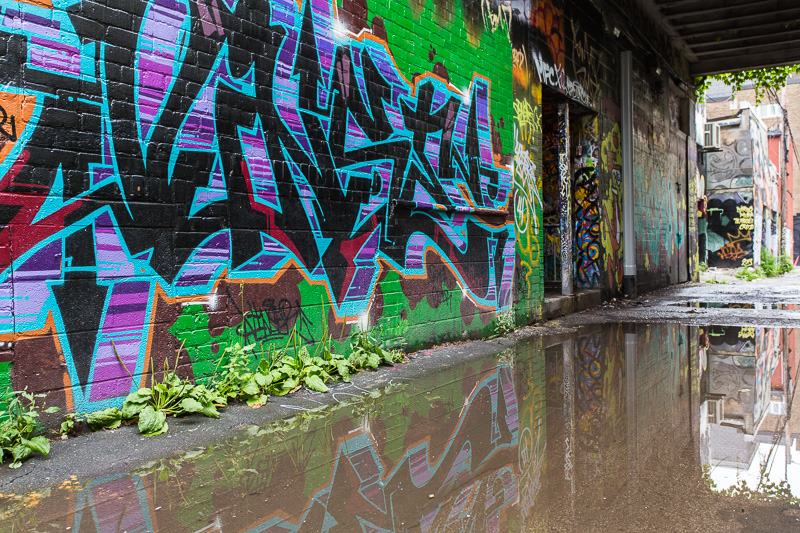
And then there’s the shit that people do when they haven’t been commissioned or archived or museumified.
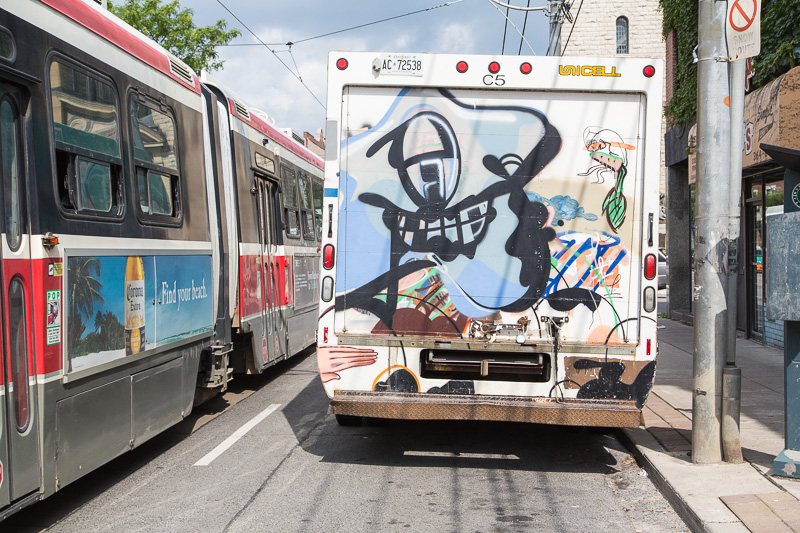
It’s this other shit, this unsanctioned shit, that concerns me. Regardless of the individual artist’s intentions, the work stands as protest. It’s necessarily anti-property. By extension, it’s anti-capitalist. Maybe the biggest slap in the face to these people is the slap delivered by photographers who exploit it for profit. Not only do they violate the simple principle that one should not profit from another’s efforts, they undermine the message. They frame the unframeable, package the unpackageable, and sell it to gynecologists as office art. In these circumstances, it’s a stretch to say that such photographers respect the subject of their work.
With that in mind, I jot down a few guidelines for photographing unsanctioned graffiti. These are for personal guidance and form more of a draft than a final set rules. Adapt them for your own purposes.
1. Don’t make money from photos of graffiti.
2. Shoot lots of graffiti. Because of graffiti’s ephemeral nature, it may be important to document it. This is especially true where the graffiti is obviously social criticism. Photos record the mood of the times as viewed from the margins. Without photos, people may forget that there even were alternative voices speaking from those margins.
3. Photos of graffiti should not be a “pure” record i.e. framing the graffiti and including nothing else. Instead, they should provide a contextual record. What about the surrounding environment? The people doing it? The things they left behind?
